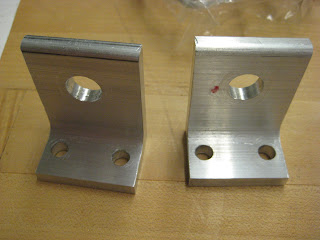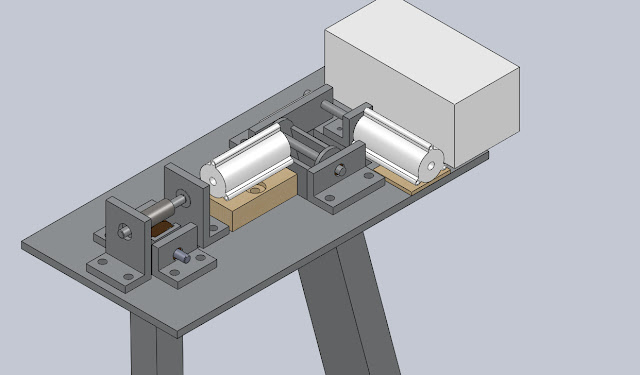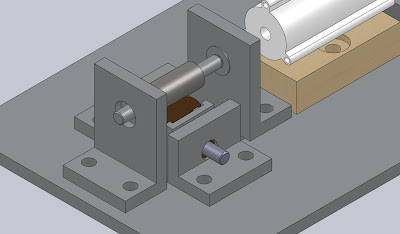When I enrolled in ME250 earlier this year I was excited to take the class because it had the terms “design” and “manufacturing” in the title. I have always been a hand-on type of guy so I figured this would be an interesting.
Four months later I can safely say that not only was this an interesting class but it was also an extremely challenging one. Appropriately, however, the increased challenge came with increased reward.
I learned a lot of different things this semester, more than I could hope to put down on one page. Here’s a short overview of things that I learned, by topic:
Design and Manufacturing
The funneling design process was a completely new concept for me. One of the most important lessons I have taken away from this is that the possibility for creativity decreases as the design process advances. Fortunately my team did well with creativity from the beginning. Had we not been so thoughtful we would have been quickly caught in a situation where we needed to make changes but were unable to due to the progress that we’d already made. As for manufacturing, everything in this category was new to me as well. I focused primarily on the mill, as Stephen already had lots of lathe experience. Tolerances and the impact they have on design is particularly interesting to me. At the beginning of the semester I simply designed my parts to call for maximum precision on all dimensions. I soon realized that to get the tolerances precise is no mean feat and that it is better practice to only tightly tolerance those dimensions that absolutely require it. From this experience the connection between precision and price in the “real world” is readily apparent. It now makes sense to me why precision instruments like automatic watches are expensive.
Teamwork and Time Management
I was fortunate to find myself in a very capable team for this project. Delegation of tasks helped us complete assignments that would have taken a lone worker at least three times as long. In addition to working well together, we avoided placing blame completely on one group member in the event that something went wrong. Instead we worked with that person to get it right the next time around.
I could keep going, but length requirements dictate that I move on.
By the way of course improvements, the elimination of vague terminology from grading rubrics would be a big plus. This was especially evident in Homework 1. The rubric at one point states that a “nice, clear sketch” is required to earn full credit. If I’ve ever read a vague statement in a rubric, this is it. However since Homework 1 was recollected for a grade adjustment this oversight has been largely made up for.
The frequent rule changes were a sticking point for many people and I tend to agree with them that it made the course more difficult. On the other hand, I also agree with those who say that dealing with changes is good real-world experience. With that in mind I am okay with the constant revisions, but hopefully the graders of the course will consider this at the end of the semester when making the final curve.
Finally, if I could have done anything to improve my performance in the course I would have helped my teammates learn how to use the mill and SolidWorks earlier. During the beginning of the machining period I did much of the work while Mack and Clayton helped out. If I could change this I would get them more involved from the start. I think this would have increased our productivity as they would have felt more comfortable milling on their own. I believe that when a teammate has trouble learning how to use a tool it is the responsibility of the team members to teach him. It’s only recently that I realized this and therefore my teammates suffered.






































